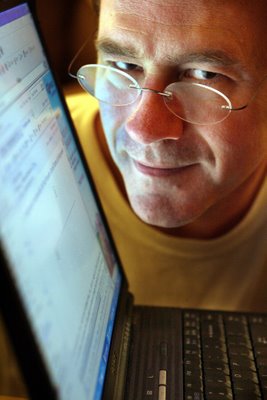TGIF for Dr. Funkenstein!



. . . a/k/a George Clinton, and his copyright attorneys, for proving that even unidentifiable samples of his music are still copyright infringements.
According to a September 7, 2004 article from the Associated Press,
A decision by a three-judge panel of the 6th Circuit Court of Appeals in Cincinnati gets said federal laws aimed at stopping piracy of recordings applies to digital sampling. 'If you cannot pirate the whole sound recording, can you 'lift' or 'sample' something less than the whole? Our answer to that question is in the negative,' the court said." The infringing two-second sample was taken from a guitar riff in "Get Off Your Ass and Jam" by '70s funk-master George Clinton and his band Funkadelic, then modified with a lower guitar pitch, that was "looped" and extended to 16 beats, before appearing five times in a a song by rap group NWA entitled "100 Miles and Runnin."According to the Sixth Circuit's opinion, the infringing sample appears in the sound recording at 0:49, 1:52, 2:29, 3:20 and 3:46. Each looped segment lasts approximately 7 seconds and can be described as follows:
The portion of the song at issue here is an arpeggiated chord - that is, three notes that, if struck together, comprise a chord but instead are played one at a time in very quick succession - that is repeated several times at the opening of "Get Off." The arpeggiated chord is played on an unaccompanied electric guitar. The rapidity of the notes and the way they are played produce a high-pitched, whirling sound that captures the listener's attention and creates anticipation of what is to follow.The court based its opinion on a literal interpretation of the copyright statute
Section 114(b) provides that "[t]he exclusive right of the owner of copyright in a sound recording under clause (2) of section 106 is limited to the right to prepare a derivative work in which the actual sounds fixed in the sound recording are rearranged, remixed, or otherwise altered in sequence or quality." In other words, a sound recording owner has the exclusive right to "sample" his own recording. . . .
[U]nfortunately, there is no Rosetta stone for the interpretation of the copyright statute. We have taken a "literal reading" approach. The legislative history is of little help because digital sampling wasn't being done in 1971. If this is not what Congress intended or is not what they would intend now, it is easy enough for the record industry, as they have done in the past, to go back to Congress for a clarification or change in the law. This is the best place for the change to be made, rather than in the courts, because as this case demonstrates, the court is never aware of much more than the tip of the iceberg. To properly sort out this type of problem with its complex technical and business overtones, one needs the type of investigative resources as well as the ability to hold hearings that is possessed by Congress.
Thank Goodness It's Friday. --Bill

2 Comments:
I'd like to see novelists get that much protection.
Interesting information!
Just curious, but....
How hard would it be in a studio to re-create a sound sample using original sound sources that would be nearly the same (but not a "copy" of) the source material?
I was given a CD with some dance music on it. One of the sampled portions includes portions that appear to be sampled from a Nixon speech. But if you listen really really closely, it is not really Nixon, but someone impersonating him.
I think some of these new artists (and labels) are just being lazy. If they want to use a certain sound byte, just re-create it in the studio....
With all the high tech gadgetry available, how hard can that be?
Of course, if you independently create a waveform that has the same frequency distribution as the source material (or nearly so) is it still a copy? Will we have to do spectral analysis on sampled bits to see who is the "author"? Or will authors embed some sort of "fingerprint" into the background to idenifty their music? It is an odd issue and this latest decision will insure your job security for years to come!
Post a Comment
<< Home
© 2004-2007 William F. Heinze